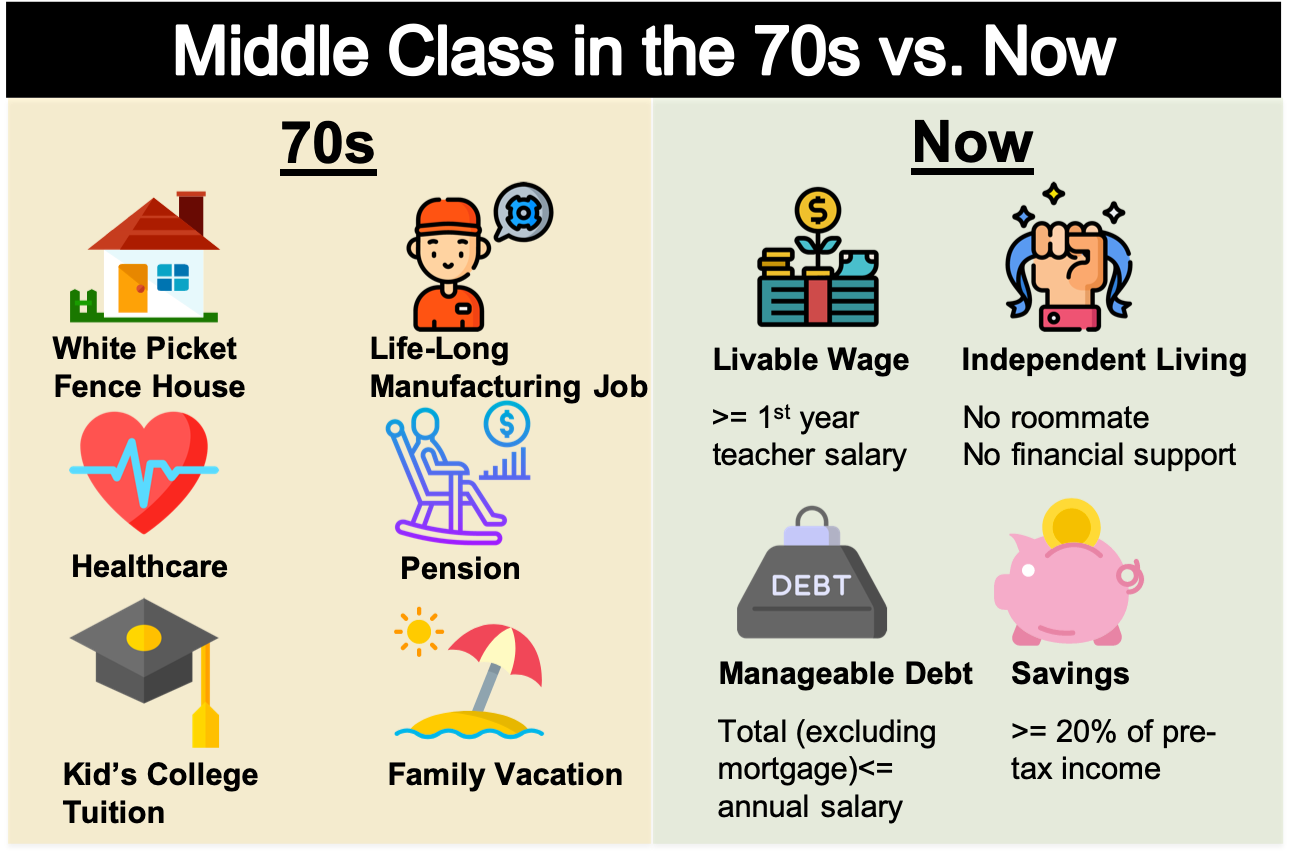Ep.80- A City-Centric Definition of Middle Class
📸 IG handle: DollarSenseLA
Read Time: 3 Minutes
MIDDLE CLASS IS NOT THE SAME AS MIDDLE INCOME
I am going to flat out say it. The concept of a “middle class” is confusing. It’s often conflated with the term, “middle income”, thus measured by a median individual/household income. For example, CNBC published this article earlier this year, “More than one-third of millennials earning at least $100,000 a year consider themselves middle class”.
In my opinion, I do not think a mere income is the best way to define the middle class. As a matter of fact, it never was.
IT IS ABOUT THE REPRESENTATION OF STABILITY AND RESPECTABILITY
Out of all the ways to define the middle class. My favorite is the one the Atlantic puts forth in 2018, which is all about the representation of stability and respectability.
Stability is way more than just a paycheck, instead, it reflects how one feels about his/her future. In the 70s, it used to be represented with a good-paying manufacturing job at GM with healthcare and a pension plan.
Respectability means someone being in a respectable state, not necessarily highly respected. In the 70s, the best representation of respectability is a house with a white picket fence.
THE ORIGINAL IDEA OF A MIDDLE CLASS IS VERY MUCH SUBURBAN
The mass development of the suburbs gave rise to the blossoming idea of “the Middle Class”, thus the material representations of stability and respectability are still very much tied up to the ways of the suburban life. In this old idea, these six things can pretty much sum up a middle-class life.
Representation of Stability
A good-paying job with a life-long career (such as manufacturing job at GM)
Healthcare
Pension
The ability to pay for children’s college
Representation of Respectability
A house with a white picket fence
Family vacation once a year
OUTDATED IDEAS IN THE 21ST CENTURY
Many on this list no longer apply to the 21st century, either as it ceased to exist completely or have become increasingly more difficult to obtain.
A “long” career no longer: In terms of a long term career, it is now hard to imagine anyone working for a company for the entire life. It would be considered a long career if one works at one place for just 5 years nowadays.
Pension is gone: Pension is almost completely gone in the modern time.
Rising college and housing costs: Both college and housing are way more expensive now than it was before. According to Forbes, from 1989 to 2016, while the median wage grew by just over 8%, the average college tuition increased by 100%, and the average housing increased by 133%.
With a shifting mindset on career, the elimination of pension, and a rising cost of college tuition and housing, the bar of the old “middle class” is now significantly higher than it was. For this reason, it’s not fair to use these metrics to define the new generation on who’s in the middle class and who is not.
A NEW CITY-CENTRIC MODERN MIDDLE CLASS
The middle class isn’t dying, but the old definition is. The new narrative of a “middle class” needs to be with its time, a more city-centric, as more and more people live in the city. It was 73% in the 70s and now 80% in 2010. We are now living a world with no pension, significant college debt, rising housing costs, and a new gig-economy with more and more contingent and freelance workers.
The new representations of stabilty and respectability need to account for all these changes.
I think if someone fits into the following criteria, then he/she is in the modern middle class. Let me know what you think?
New Representation of Stability
Livable Income: I would define it as greater or equal to the first-year public school teacher in your city. It is not a lot, but it is a livable wage at the minimum.
Manageable Amount of Debt: All debt (excluding mortgage) should be less than your annual salary. I think so because, with this amount of debt, you can expect to pay it off between 3-5 years.
New Representation of Respectability
Independent Living: Buying a house in a major city is very difficult, I may even argue it’s more of a representation of rich than the middle class. Since this is too high, I think independent living, which means without roommates and receiving financial support, is a better modern representation.
Save 20%: Saving 20% is no easy task. I think a 20% savings rate against pre-tax income is a good benchmark for the modern middle class. This can include any retirement savings such as a 401k or IRA, or any cash savings.
Do you fit into the middle class in the old or new definitions?

